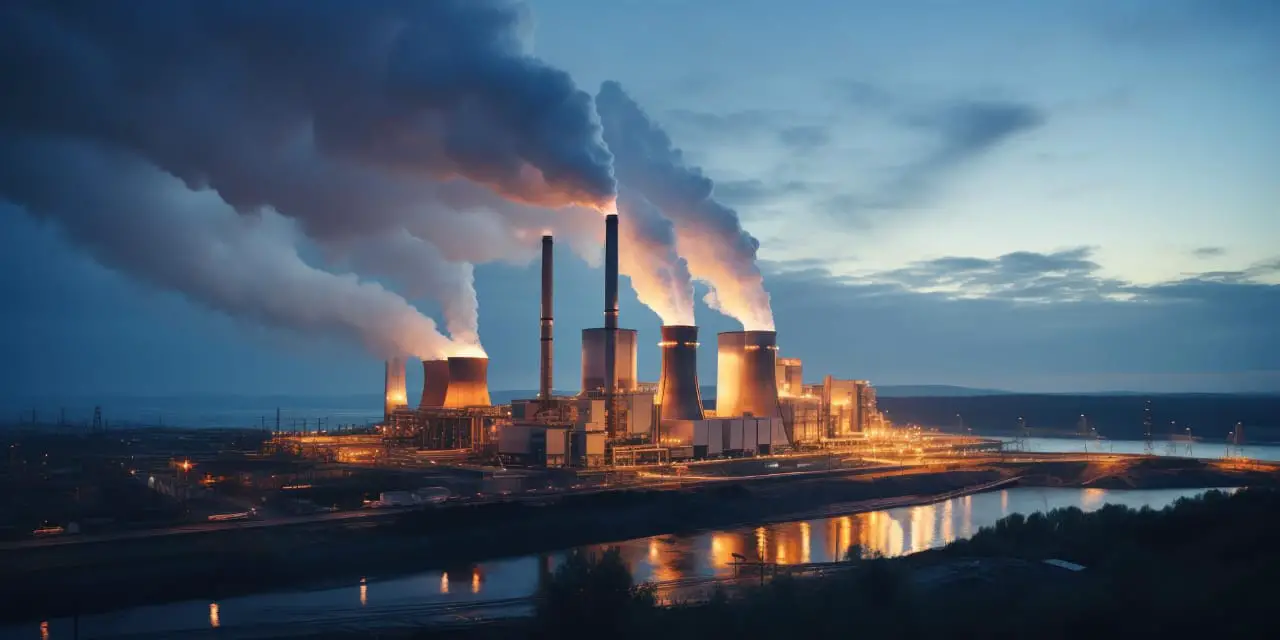Environmental degradation is the degradation of the environment through depletion of resources which includes all the biotic and abiotic elements around us such as air, water, soil, animals and all other living and non-living elements of planet Earth. The main factors of environmental degradation are human (modern urbanization, industrialization, excess population growth, deforestation, etc.) and natural (floods, storms, drought, rising temperatures, fires, etc.) causes. Today, various types of human activities are the main causes of environmental degradation. Automobiles and industries increase the amount of poisonous gases like SOx, NOx, CO and smoke in the atmosphere. Therefore, the government should bridge the gap in the legal system to avoid illegal activities. This chapter discusses the impact of environmental degradation and its future implications, the plans for city planners, industry and resource managers that should be considered to mitigate the long-term effects of developmental environmental degradation.
Introduction
Environment is something we are very familiar with. It is everything that makes up the environment around us and affects our ability to live on Earth. Environmental degradation is a very serious problem worldwide, encompassing pollution, biodiversity loss and animal extinction, deforestation and desertification, global warming and more (Brown et al., 1987; Tian et al., 2004 ). Environmental degradation is the deterioration of the environment through depletion of many types of resources in whole world resources which includes all the biotic and abiotic elements around us which are air, water, soil, plants, animals and all other living and nonliving elements of the planet Earth (Bork et al. ., 2005; Malcolm and Pitelka, 2000). Environmental degradation also has a beneficial aspect, more new genes are created, and some species have increased while others have decreased. For natural selection, species are constantly reproducing with changes in the environment, and human activity is the main driving force. Man is also a product of nature; This change is for natural replacement.
About three-fourths of India’s population is directly dependent on natural resource-based activities for its livelihood and the remaining population is directly dependent on these resources for food, fuel, industrial production and recreation (Raven et al., 1998). Most of the natural resources including the environment in India are in a state of severe degradation. Agricultural fertilizer use is a major factor in soil quality degradation, soil erosion, salinity and general loss of agricultural land fertility as well as reduction in quality crop production. Similarly, in many arid and semi-arid regions groundwater aquifers are overexploited, surface water sources are highly polluted and as a result, water for drinking and irrigation is becoming increasingly scarce and polluted. Fish production is declining and increasing levels of air, water and land pollution pose a serious threat to human health and longevity (Malik et al., 2014; Malik et al., 2018; Yadav et al., 2019). Good environmental management at all total places in whole world is essential for economic growth and development. This is not just a luxury for wealthy countries concerned with aesthetics, as is sometimes mistakenly said. Climate change and environmental degradation affect various types of development projects in all countries of the world . If development agencies are to seriously contribute to poverty reduction in the communities in which they work, they must consider the climate and environmental threats that affect their projects. Climate change and environmental degradation are advancing rapidly and are already affecting many communities in developing countries. O’Neill et al. (2010) Their study conducted in 35 countries showed that slowing population growth could save 1.4 to 2.5 billion tons of carbon emissions per year by 2050, which would certainly help solve the climate problem.
Causes of environmental degradation
The main factors of environmental degradation are human (modern urbanization, industrialization, population growth, deforestation, etc.) and natural (floods, storms, drought, rising temperatures, fires, etc.) causes. Environmental pollution refers to the decline in the quality and quantity of natural resources. Various types of human activities are the main causes of environmental degradation. Automobiles and industries increase the amount of toxic gases and smoke like SOx, NOx, CO in the atmosphere. Unplanned urbanization and industrialization have given rise to water, air, soil and noise pollution. Industrialization, urbanization and sewage wastes help to increase the pollution of water sources (Olorode et al., 2015). Similarly, smoke from vehicles and industries such as chlorofluorocarbons, nitrogen oxides, carbon monoxide and other dust particles pollute the air. Ever since man began to use tools and gradually built a society, he began to play an important role in the development of the natural environment.
1. Land degradation
Land degradation is a worldwide problem: land degradation can occur naturally as well as through man-made activities. Climate change has combined with human activities to lead to continued soil erosion. Wilcox et al. (2003), Vankar et al. (2014), Maurya and Malik (2016a) noted that surface soil disturbance can modify surface topographic features and vegetation patch structure (Mohar et al., 2013; Malik and Maurya, 2015). Deforestation, desalination, waterlogging, desertification, barren lands and soil erosion. FAO estimated that about 2 billion people (or ¾ of the population of developing countries at that time) were dependent on biomass for their daily energy consumption (Kumar et al., 2020).
2. Pollution
Air pollution refers to the release of various types of harmful pollutants in whole world (chemicals, toxic gases, particles, biological molecules, etc.) into the Earth’s atmosphere. These pollutants are quite harmful and in some cases cause serious health problems. Water pollution occurs when toxic pollutants and particulate matter enter water bodies such as lakes, rivers and oceans. These pollutants typically enter through human activities such as improper sewage treatment and oil spills. Pollution is a very serious problem around the world, pollution has led to the decline in the quality of natural biotic and abiotic factors (Rahman et al., 2017; Cheng et al., 2016). Water pollution is a huge problem around the world especially in developing countries. Water covers about 71% of the Earth’s total surface and groundwater. Groundwater scarcity is particularly prevalent in developing countries around the world (Karikari and Ansa, 2006). Water is one of the most essential of all urban and rural amenities and is indispensable for human activities, including water for drinking and irrigation, recreational opportunities, and habitat for economically important fisheries. Pollution poses a serious risk to life, especially when the water is for drinking and domestic purposes for humans, polluted waters are potent agents of diseases such as cholera, typhoid and tuberculosis. In the year of (1995) Olaniran named person defines that water pollution as the presence of excessive amounts of a hazard (pollutant) in water, making it unfit for drinking, bathing, cooking or other uses in whole world. Pollution is the entry of contamination into the environment.
Water pollution is generally caused by humans. It occurs as a result of actions taken by humans for their better self. These can be treated under various activities carried out by humans, which lead to pollution. Increase in human population, industrial and agricultural practices are the major causes of pollution (Maurya and Malik, 2016a). As they respire, decomposers use up dissolved oxygen (O2) and biological oxygen demand (BOD) is reduced. There are changes in the flora and fauna near the river reviewing the studies made by Maurya and Malik (2016b), as well as Maurya et al. (2019) showing that the reason of alterations and population decrease is suffocation and death. Such impacts may be attributed to stress and pollution in the respective environments.The increasing problem of pollution of river ecosystem has made monitoring of water quality necessary. Freshwater is a limited resource, essential to agriculture, industry, and even human survival. Every gallon of gasoline used in automobiles is produced, distributed, and then burned in the vehicle, producing carbon dioxide, carbon monoxide, Sulfur dioxide is produced along with nitrogen dioxide and particulate matter; These emissions contribute to global warming (Alexander and Kanner, 1995; Mark, 1997). The Environmental Protection Agency (EPA) estimates that industrial workers suffer 300,000 pesticide-related serious illnesses and injuries per year, the majority of which are cholinergic symptoms from anticholinesterases and lung disease from air exposure (Hansen and Donohoe, 2002 ; Mellon et al., 1995 ). These are toxic, persist for long periods of time in the environment, resist erosion, and can travel long distances.
3. Global Warming
Global warming, also known as climate change, is an observed increase in the average temperature of the Earth’s climate system. Global surface temperatures are expected to rise by 0.3 to 1.7 °C in the lowest emissions scenario and by 2.6 to 4.8 °C in the highest emissions scenario. These readings are documented by the National Science Academies of the leading industrialized countries to offer important scientific input in various fields such as climatic change and technology among others. Future climate change and impacts will vary from region to region. Expected impacts include increased global temperatures, sea level rise, deforestation, unbalanced climate conditions, changes in precipitation, and expansion of deserts (Cunningham et al., 1999). Global warming has many adverse effects on human health and agricultural production. This leads to an increase in heat-related diseases, civil conflicts, and depletion of economic resources. In addition, it also indirectly affects human health due to high incidence of malaria, dengue, yellow fever and viral encephalitis due to the spread of mosquitoes and other disease vectors in hot areas. Agricultural production is adversely affected by increasing frequency of drought, floods and storms and increasing incidence of pests, leading to food shortages.
4. Over Population
It is quite possible that population growth is a lost scientific agenda, one reason for declining public knowledge and interest in the issue. Pollution is different across the world due to industrialization, deforestation, pollution and exploitation of resources with the third world countries being affected more than the first world countries. Rapidly increasing population puts pressure on natural resources, resulting in degradation of our environment. Better medical facilities have led to a decline in mortality rates, resulting in increased lifespan. More population directly means more demand for food, clothing and shelter. In whole world all peoples have need more space to grow food and provide homes to millions of people. This results in deforestation, loss of biodiversity, destruction of ecosystem which is another factor in environmental degradation.
5. Landfill
Landfills pollute the environment from various types and destroy the beauty of the city. Landfills come up within the city due to the large amount of waste generated from homes, industries, factories and hospitals. Landfills pose a huge threat to the environment and the health of the people living there. Burning of landfills produces foul smell and causes severe environmental degradation.
6. Deforestation
Forests are invaluable assets of any country as they provide raw material for modern industries, wood for construction purposes, habitat for many types of animals and micro-organisms. Good fertile and nutrient rich soil containing high amount of organic matter provides protection to the soil by binding it through its network of roots and protecting the soil from the direct impact of falling rain drops. They encourage and enhance rainwater infiltration and thus allow maximum recharge of groundwater resources, reduce surface runoff and thus reduce the frequency, intensity and amplitude of floods. Deforestation is the cutting of trees to make way for more homes and industries. Rapid population growth and urban sprawl are two major causes of deforestation. Apart from this, use of forest land for agriculture, animal grazing, logging and logging for fuel wood are some other causes of deforestation. Deforestation contributes to global warming because reduced forest cover releases carbon back into the environment.
Deforestation causes many problems, including increased rates of soil erosion, increased amounts of sediment in rivers, siltation in reservoirs and river beds, increased frequency and magnitude of storms and droughts, changes in rainfall distribution patterns, This includes environmental degradation through climate change, increase in greenhouse effect, increase in the destructive power of atmospheric storms, etc.
7. Natural Causes
Things like avalanches, earthquakes, tidal waves, storms, and fires can destroy nearby animal and plant communities to such an extent that they can no longer survive in those areas. This can occur either through physical destruction as a result of a specific disaster or through long-term degradation of properties by the introduction of an unpleasant alien species into the environment. The latter often occurs after tidal waves, when reptiles and insects are washed ashore, of course, humans are not entirely to blame for this whole thing. The Earth itself also causes ecological problems. While environmental degradation is most commonly associated with things people do, the truth of the matter is that the environment is always changing. With or without the influence of human practices, some biological systems deteriorate to such an extent that they can no longer support the life that is supposed to live there.
8. Economic Logic
Environmental change is one of a myriad of pressures or demands placed on the resources and attention of the state. Many responses to environmental stress involve uncoordinated human responses that are strongly influenced by markets. Accordingly, producers and consumers respond to changes in prices, relative income, and external constraints. But often market ‘signals’ do not reflect social values, as in the case of inter-generational equality, for example, or the harmful effects of environmental degradation are not internalized into market prices and are ‘externalities’. Remain as. As a result, states often choose to intervene with collective actions aimed at managing environmental change and reducing associated adverse social and economic impacts.
Effects Of Environmental Degradation
1. Effects On Human Health
Environmental degradation can result in harm to human health. Respiratory problems such as pneumonia and asthma can occur in areas exposed to toxic air pollutants. Millions of people have died due to the indirect effects of air pollution (Adakole and Oladimeji, 2006).
2. Loss Of Biodiversity
Biodiversity is important for maintaining ecosystem balance as it combats pollution, restores nutrients, protects water sources, and stabilizes the climate. Deforestation, global warming, overpopulation and pollution are some of the major causes of biodiversity loss.
3. Ozone Layer Depletion
From past to at present time and in future the ozone layer is responsible for protecting the Earth from various harmful ultraviolet rays. The presence of chlorofluorocarbons, hydrochlorofluorocarbons in the atmosphere is causing depletion of the ozone layer. As it dissipates, it will release harmful radiation back to Earth (Buhaug et al., 2010).
4. Loss For Tourism Industry
Degradation of the environment can be a huge blow to the tourism industry, which depends on tourists for its daily livelihood. The damage caused to the environment in the form of loss of greenery, loss of biodiversity, huge landfills, increase in air and water pollution may turn off most of the tourists.
5. Economic Impact
The huge cost that a country may have to pay due to environmental degradation can have a huge economic impact in terms of restoration of green cover, clean-up of landfills and conservation of endangered species. The economic impact could also be in the form of loss of the tourism industry. As you can see, there are many things that can impact the environment. If we’re not careful, we could contribute to environmental degradation around the world. However, we can take action to prevent this and take care of the world we live in by providing environmental education to people, which will help them become familiar with their surroundings.
Read Also:
- What is Environment
- Environment :Introduction, Types, Examples
- Our Environment : Components and Importance Of Environment
- 20 Advantages of Environment
- 400 Environment Related Issues At Present Time








Leave a Reply